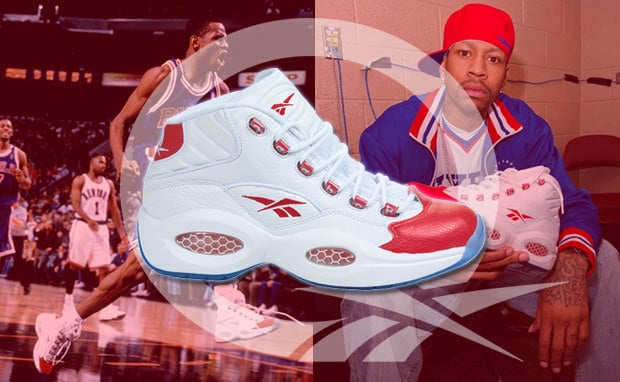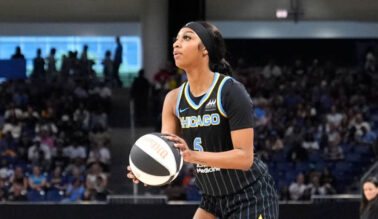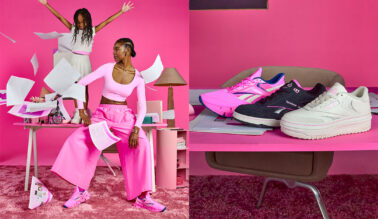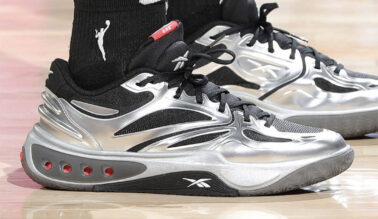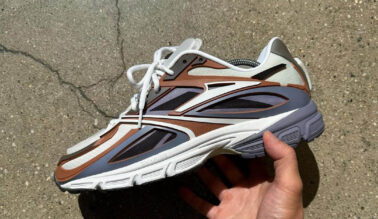This post may contain affiliate links. Please read our disclosure policy.
“I think it’s important that Allen’s stamp is still on this. I’m not really sure how the other brands work and I’m not really sure when the other brand’s bring product back if they engage the athlete? I don’t know how they do it. For us, it was really important that we went to AI and said, ‘Hey this is what we’re planning on doing. We want to do it in 2012 and we want you to be involved.” – Todd Krinsky, Reebok Vice President
Today, one of the most iconic and important sneakers in basketball history made its return. The Reebok Question rose to fame fast thanks to Allen Iverson’s rookie year accolades and distinct sense of style. Before the launch, we caught up with Reebok’s Vice President Todd Krinsky to discuss the past, present, and future of the historic shoe and its storied endorser. Hear the history behind the sneaker, its reason for return, and what to expect next from AI and Reebok.
Nice Kicks: Back in 1996, there were no blogs, and no forums. How do you remember the Question being received?
Todd Krinsky: Even though we started designing the shoe when AI was still at Georgetown, by the time we confirmed the shoe and signed him we could only get limited pairs into the marketplace. We figured we’d use that to our advantage so we only put them in certain areas. We put them in Philly and DC and that was really it. When we first put them out, I started getting phone calls in the morning that kids were coming in right after school and that the shoes were almost sold out, and that was only one day. We started hearing stories from the store employees that kids were coming from Delaware and Boston, driving 3-4 hours to go to the Philly store to get the shoe. After the second day it was completely sold out. That’s when I called Allen, it was within the first couple weeks of his rookie season, and told him they were completely sold out and congratulated him. It was something we didn’t expect, but it was really cool that kids were coming from all over to get it.
Nice Kicks: You speak on starting the Question design back when Allen was still at Georgetown. What was it like meeting him and what was his reaction to hearing he already had a shoe in the works?
Todd Krinsky: It was kind of surreal for us, because of a bunch of us had been championing Allen in our corporate offices for a long time. Myself and this gentlemen named Que were internally trying to get everyone to know who he was, to get everyone in the mindset that there’s a draft every year, but not an Allen Iverson every year. The first time we met him in DC was more about just getting to know each other. We didn’t show him the shoe the first time, but we did the second time. His eyes lit up when he saw the shoe. I think he was really impressed that we were working hard and I think he really believed in us. He saw the passion that this wasn’t just another project for us and he just really liked the shoe. He made some comments on things he liked and didn’t like so we made some small changes before we released it. A lot of us were new to the game, so it was new to us too to be able to work with someone like Allen. He definitely appreciated it from the beginning.
Nice Kicks: Did you anticipate the Question having such casual success when working on it?
Todd Krinsky: No. When we designed it, it was really all about performance. We wanted it to be about speed, we wanted it to have elements of speed to it. We created the speed Gilly system and the pop on the toe because Allen moves so quick that we wanted something to really pop when he’s moving. It was all really created out of trying to make a great product for a speed player, but it had great fashion ability. Allen had great style on the court and it looked cool with jeans, especially all the toe colors. We didn’t anticipate it to be a big fashion play, but it quickly became adopted on the street as one of those must have looks for kids.
Nice Kicks: The shoe was a hit in the city and the suburbs, what do you attribute that to?
Todd Krinsky: It’s funny. If you look back at the sell-through of the shoe, it’s one of the only shoes that sold equally well in both the suburbs and urban areas. Some of the markets that sold suburbia wise were really shocking to us, but then, every borough in New York and in Philly it did really well, too. The shoe itself was really clean and wearable, and also Allen transcended all barriers. Kids all over the world loved him because of his heart, his fearless play, and his size. He was a little man competing with these giants night in and night out. Those attributes are universal. You don’t have to be from the hood or from the suburbs to respect a kid that’s 6’1, 165 pounds giving it his all every night. That’s just universal. I think Allen himself meant all sorts of things to different people for different reasons and the shoe itself was clean and really wearable. A combination of things made it so relevant around the world and in different pockets of the world.
